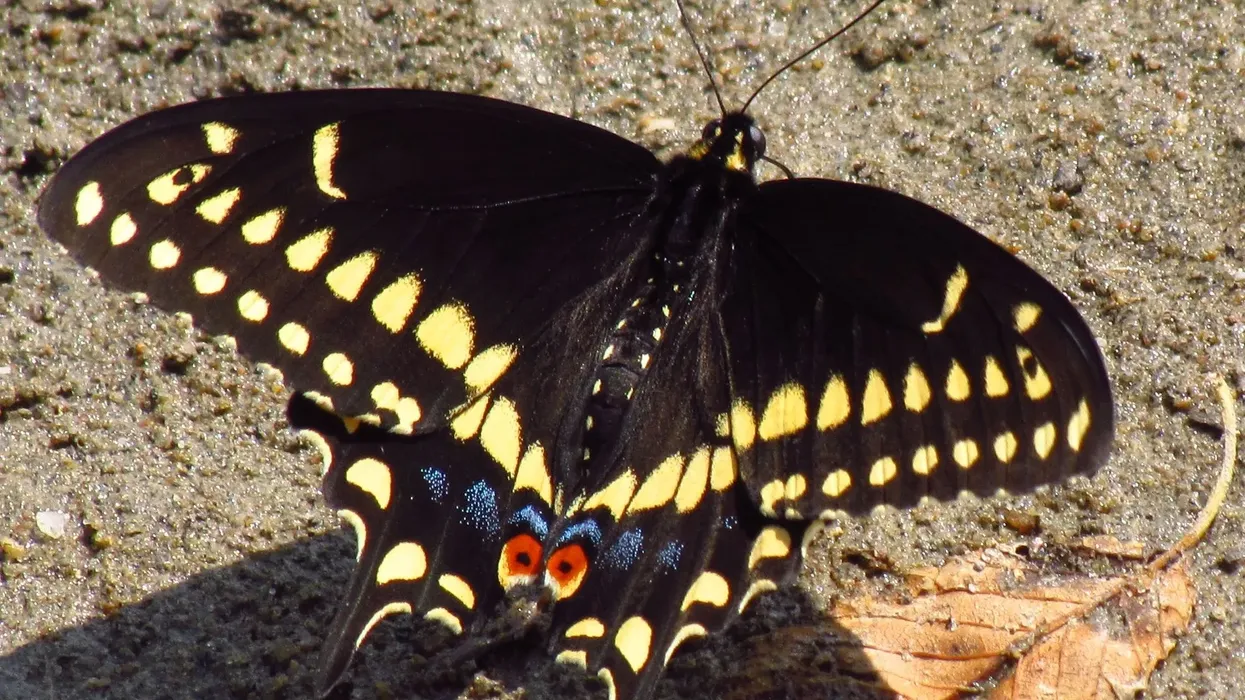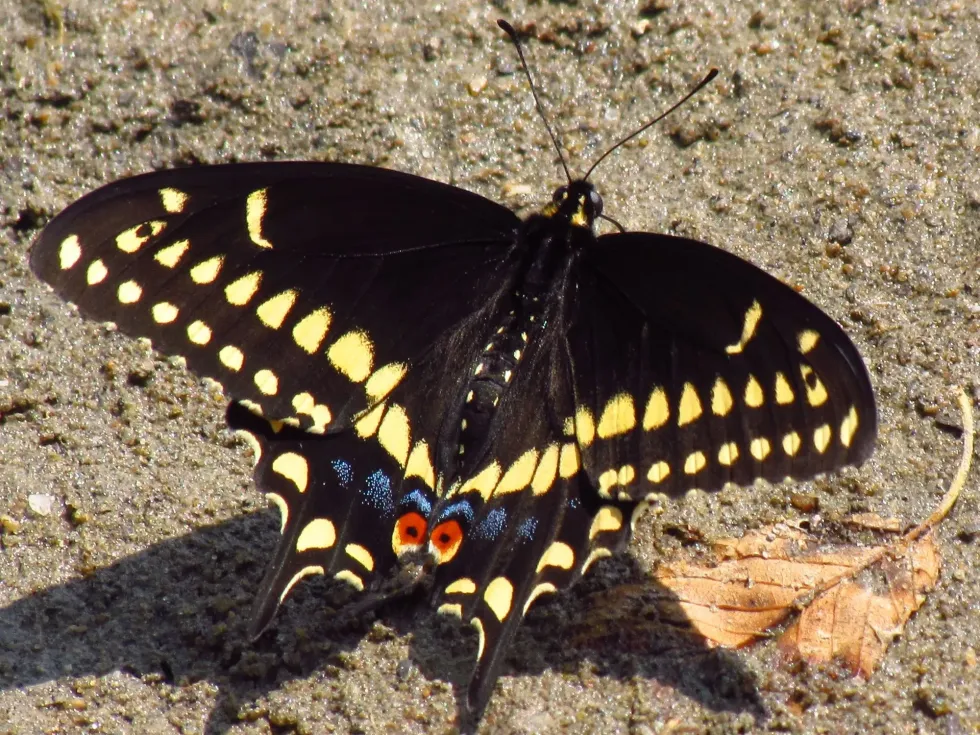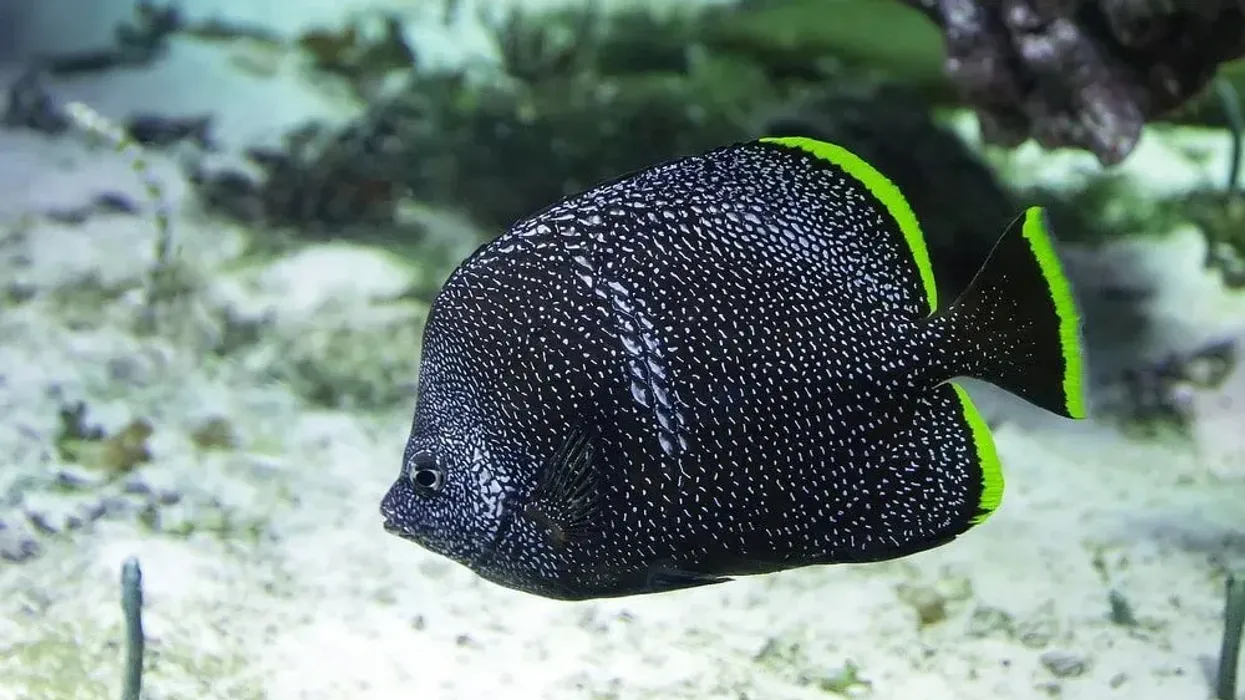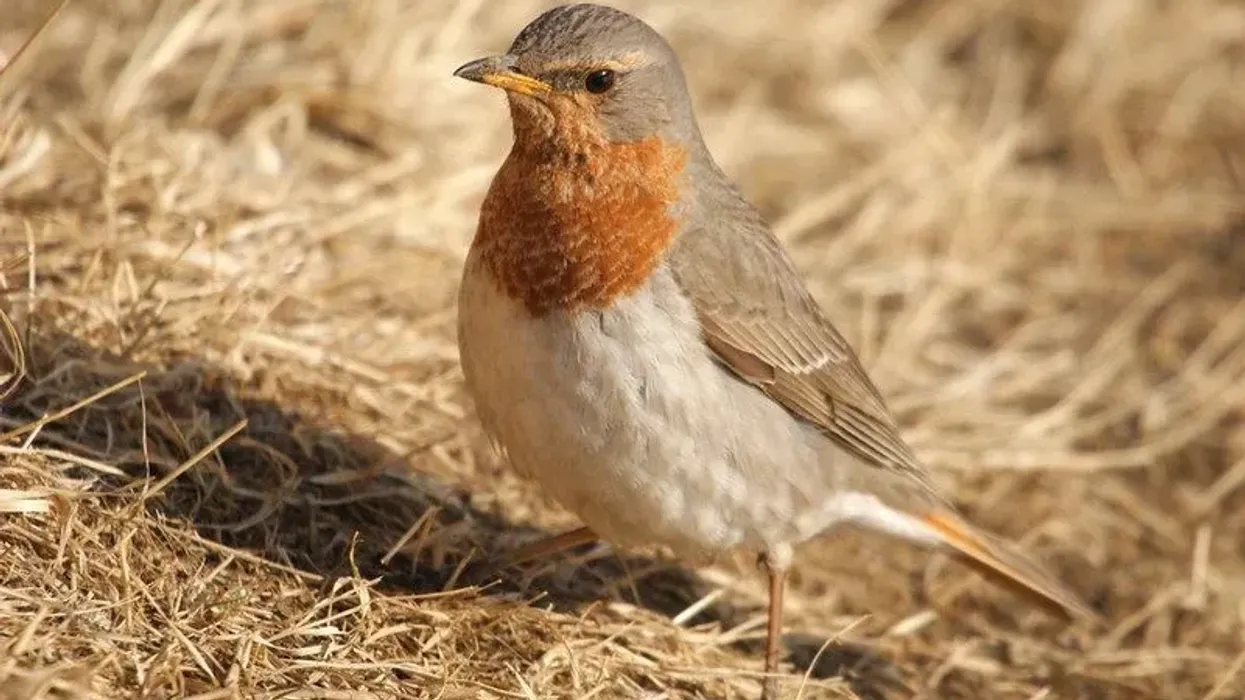Black Swallowtail butterflies are not only a beautiful species to learn about, but they are also extremely interesting. Here are some facts about them.
Adult butterflies, as well as caterpillars, have something called host plants. A host plant is where eggs are laid.
After hatching from their eggs, the larvae derive their nutrition and food from such plants. These butterflies from the family Papilionidae, use Umbelliferae plants as their hosts. Such plants include plants called the Queen Anne's lace, carrots, parsley, parsnip, caraway, and more.
Once the caterpillars grow into adults, they grow wings that are mostly black with spots of yellow. Apart from yellow dots, you can also spot blue, orange, and red on their wings.
Adult members of these beautifully colored butterflies, whose wings are a combination of black, yellow, orange, blue, and red, can be seen flying above a range of open areas. To know more about their behavior, dive right into the facts below.
For more similar content, check out skipper butterflies and morpho Butterflies.
Black Swallowtail Interesting Facts
What type of animal is a Black Swallowtail?
The Black Swallowtail (Papilio polyxenes) is a type of butterfly.
What class of animal does a Black Swallowtail belong to?
The Black Swallowtail butterfly (Papilio polyxenes) belongs to the class of insects and the family Papilionidae.
How many Black Swallowtails are there in the world?
The exact population of the Black Swallowtail (Papilio polyxenes) remains unknown. However, they are known to have a steady population. Their population is said to be widespread around the world. As a result, their population is not under any current threat.
Where does a Black Swallowtail live?
The Black Swallowtail butterfly (Papilio polyxenes) is also known as the American swallowtail because it is native to America. They are native to the range of both North America and South America. In North America, the Black Swallowtail can be found in Southern Canada.
However, their range is limited up until the western part of the Rocky mountains begins. They can also be found in places like New Jersey and Florida. On the other hand, in the southern range, they can be found in West Indies.
What is a Black Swallowtail's habitat?
The Black Swallowtail (Papilio polyxenes), from the family Papilionidae, has a temperate or tropical habitat. They prefer a habitat of open areas such as meadows, parks, lowlands, fields, and gardens. They can also be found in dry areas like deserts or dunes. Wetlands such as marshes can also be home to the Black Swallowtail butterfly.
Who do Black Swallowtails live with?
The Black Swallowtail (Papilio polyxenes) is a solitary species. This means that they live on their own. On very rare occasions, the Black Swallowtail butterfly can be seen to migrate.
How long does a Black Swallowtail live?
The Black Swallowtail has an average lifespan of around two months as compared to the year-long lifespan of the red admiral butterfly.
How do they reproduce?
During the breeding season, the male Black Swallowtail can be seen flying and resting atop hills and also plane areas alternatively. This is done to attract the female Black Swallowtail. Males have a territory of 753.4 sq ft (70 sq m).
They spend most of their day perching, while the rest is spent roaming around, eating, and communicating with others of their kind. The location where a male perches remain subject to change every day. This species usually breeds on the top of a hill.
The courting session lasts for about 45 seconds. During this phase, both sexes flap their wings rapidly.
Then they travel 65.6 ft (20 m) to breed. It takes 30-45 minutes for them to breed. After breeding, the female is vulnerable and must avoid other males that are breeding adults.
The female can breed multiple times to fertilize her eggs without fail. Females lay eggs on the Umbelliferae (like parsley, carrots, and caraway) leaves. 200-440 Black Swallowtail eggs are laid per season, and females lay 30-50 eggs per day.
What is their conservation status?
As per the International Union for Conservation of Nature (IUCN) Red List, the Black Swallowtail is a species of Least Concern. This means that they face no threats of being endangered as of now.
Black Swallowtail Fun Facts
What do Black Swallowtails look like?

The Black Swallowtail, especially females, strikes a close resemblance to the pipevine swallowtail. The wingspan of these butterflies is 4.5 in (11.43 cm).
The wings of the adult butterflies are black in color. There are a couple of rows of yellow spots running down the middle of each wing.
Females have lesser, or negligible, yellow spots. The hindwing of the male is adorned with blue dots on the upper surface, whereas it is a blue area or band in the case of females. A big red dot that has another black circle within it decorates the upper part of the hindwings.
Underneath this wing, there are multiple reddish-orange spots. Their appearance is quite different from other species, like the purple emperor butterfly.
How cute are they?
The Black Swallowtail is quite adorable to look at. They have a beautiful pattern on their wings with the right splash of colors. This makes them a treat to watch.
How do they communicate?
Not much is known about the communication patterns that the Black Swallowtails undertake to communicate with each other. They are known to show signs of communication during courtship and warnings about their territories. These are particularly seen in males.
How big is a Black Swallowtail?
The Black Swallowtail measures about 2.8-3.5 in (7.1-9 cm) in length. It is more than four times the size of a carpenter ant and is slightly smaller than the pipevine swallowtail.
How fast can a Black Swallowtail fly?
The speed at which the Black Swallowtail butterfly flies remains unknown. However, the Black Swallowtail caterpillars are known to have a rapid crawl speed.
How much does a Black Swallowtail weigh?
Since the Black Swallowtail has a petite size, its weight is negligible. The weight of Black Swallowtail caterpillars is not known either.
What are the male and female names of the species?
There are no separate names for males and female Black Swallowtails. They are simply called a male Black Swallowtail and a female Black Swallowtail, respectively.
What would you call a baby Black Swallowtail?
Before transforming into a Black Swallowtail butterfly, they live in the form of a Black Swallowtail caterpillar. There are various Black Swallowtail caterpillar stages. In the pupal stage, they are known as the Black Swallowtail chrysalis. Even before that, they are termed larvae.
What do they eat?
This species is herbivorous in nature. Even though they have a transformative life cycle, their diet remains somewhat uniform throughout the Black Swallowtail life cycle.
The Black Swallowtail butterflies primarily feed on the Umbelliferae plant, which is also their host plant. Such host plant includes dill, celery, Queen Anne's lace, parsley, caraway and other plants of the carrot family.
Although these plants are rich in a chemical called psoralen, the Black Swallowtail butterfly and caterpillar feeds on them since their bodies can flush out the toxins.
As larvae, they feed on the flowers of these plants of the carrot family. Adults, on the other hand, are prone to have mud and nectar as their food.
Are they poisonous?
No, the Black Swallowtail is not poisonous, unlike the closely related pipevine swallowtail. The pipevine swallowtail has a close resemblance to the Black Swallowtail but is extremely poisonous.
Would they make a good pet?
Yes, they make good pets because of their low-maintenance and harmless nature.
Did you know...
There are certain ways through which you can take care of the Black Swallowtail caterpillar. Most importantly, they should be well fed at all times with Black Swallowtail caterpillar food. You can feed the caterpillar parsley, Queen Anne's lace, and fennel. Once they show growth, the caterpillars should be fed leaves thrice or even four times per day.
Male and female Black Swallowtails can be differentiated by the color of their wings. While the male has more yellow spots and lesser blue color on their wings, it is the reverse for females.
What is the difference between a Black Swallowtail and a Monarch Butterfly?
The major difference between a Black Swallowtail and a monarch butterfly lies in their appearance. While the Black Swallowtail has a black-colored wing with rows of yellow spots, the latter is devoid of any such yellow spots.
Instead of yellow spots, the monarch is adorned with orange wings that are striped with black and spotted with white on the edges. Black Swallowtail butterflies also have blue spots on the upper surface and orange spots underneath their hindwings.
Additionally, Black Swallowtails can be found near Umbelliferae plants (like parsley, carrots, and carraway) which act as their host plants. On the contrary, milkweed plants are the host plants of monarch butterflies.
Why is a Black Swallowtail also called a Parsnip Swallowtail?
They are known as the parsnip swallowtail because parsnip is one of the preferred host plants for these butterflies.
Here at Kidadl, we have carefully created lots of interesting family-friendly animal facts for everyone to discover! For more relatable content, check out these monarch butterfly facts and viceroy butterfly for kids.
You can even occupy yourself at home by coloring in one of our free printable Black Swallowtail butterfly coloring pages.









